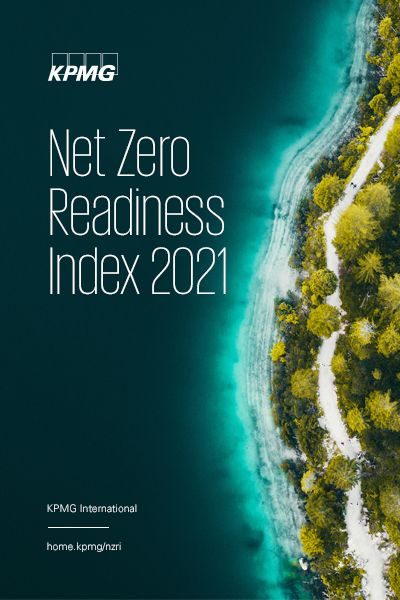One of the world’s largest oil and gas exporters is the most ready to transition to Net Zero due to private and public investment into renewable energy and electrifying transport – but will economic considerations slow the speed of change?
Private and public momentum
In June 2016, the Norwegian parliament moved its target date for carbon neutrality forward from 2050 to 2030, two decades earlier than the commonly-used UN target.1 Although Norway leads the inaugural NZRI and is placed third on national preparedness, it faces significant decisions over how it continues to tackle climate change.
Geographic and economic considerations may constrain the pace of ‘green' government ambitions. For example, carbon-intensive aviation rather than rail is used to link many towns and cities due to the country’s mountainous geography. Much of Norway is covered by forest, but only 5 percent out of a 10 percent target set by the Norwegian parliament is formally protected. Reaching this target will largely depend on voluntary protection of forests on privately-owned land and limiting the impact on commercial forestry interests.

Most critically, the future of the country’s energy production will be an issue for the country’s general election in September 2021. It is a leader in renewable electricity generation, but relies economically on exports of oil and gas and is in seventh position in the electricity and heat sector. Should it power fossil fuel extraction using renewables, decarbonizing the process if not the fuel itself, or look to end extraction completely, considering potential economic impacts in the short term, or climate risks in the future? Norway is certainly not alone in this challenge but is one of the most well-equipped oil producers to lead the way.
Energy transition
A full transition to renewables may be hampered by rising electricity demand driven by decarbonization work. For example, Norway ranks first for the transport sector in the NZRI; electricity is increasingly needed for transport where Norway leads the world in adopting electric vehicles as a result of generous registration tax incentives and VAT exemptions, as well as an upcoming ban on the sale of combustion engines. Buildings are also mostly heated with electricity, district heating, geothermal or heat from waste rather than fossil fuels, although significant reductions in energy consumption could still be achieved by introducing energy efficiency measures for older buildings.
But the biggest issue remains the gap between the domestic and regional demand for renewable power and what Norway can generate. Building more capacity is increasingly difficult, with some communities opposing new wind turbines because of their visual impact and disruption of wildlife and reindeer husbandry. Their construction also affects local environments, in some cases with implications for biodiversity and climate change if marshlands and wetlands are disturbed, causing release of methane. Similarly, hydroelectric power often requires dams and reservoirs. “We have a challenge balancing those kinds of needs,” says Johanne Solum Ness, Senior Associate at KPMG in Norway.

There are lower-impact ways to increase renewable generation, such as improving efficiency of existing hydropower locations. Norway is well-placed to use its expertise in marine fossil fuel extraction to build offshore windfarms, with partly state-owned oil producer Equinor planning rapid expansion off Norway – including to power oil and gas platforms – as well in other countries including Poland, the UK and the US.2 In addition, Freyr, based in northern Norway, is aiming to develop environmentally-friendly battery technologies which can help balance supply and demand.3
Norway is also likely to have an outsized influence on the broader region’s readiness to achieve Net Zero. The country currently exports renewable electricity to neighboring countries and is about to connect to the UK through the world’s longest undersea electricity cable completed in June 2021 and due to go live in October.4 In addition, Norway’s sovereign wealth fund – founded on oil and gas revenues and the world’s largest at USD1.3 trillion – has a mandate to invest up to 2 percent of the fund’s assets in renewable energy assets and projects, primarily across the US and Europe.
Green technologies
Norway boasts the highest number of industrial clean technology companies relative to population, with a strong focus on circular economy practices of regenerating, reusing and repairing goods.
With the expertise and wealth it has from oil and gas production, Norway can also play a leading role in developing several of the technologies that could help solve the problem their use has caused. “Norway is in a special position to do that,” says Ness.
Norway topped the carbon capture and storage policy and planned storage capacity indicators in the NZRI, and receives the highest ratings from the Global CCS Institute on both policy and planned storage capacity. Its use could allow Norway and other countries to reach Net Zero without scrapping all fossil fuel use, although this looks likely to be expensive for decades to come.
Contributor

Johanne Solum Ness
Senior Associate, KPMG Pure Sustainability
KPMG in Norway
1 Nerijus Adomaitis, ‘Norway brings forward carbon neutrality goal to 2030’, Reuters. https://www.reuters.com/article/us-norway-climatechange-idUSKCN0YT1KM
2 ‘We’re determined to be a global offshore wind energy major. Here’s how’, Equinor, accessed July 2021. https://www.equinor.com/en/what-we-do/wind.html
3 ‘Purpose’, Freyr, accessed July 2021. https://www.freyrbattery.com/about/mission-and-vision
4 ‘Final cable laid for world’s longest subsea electricity link’, North Sea Link, 14 June 2021. https://www.northsealink.com/en/news/



